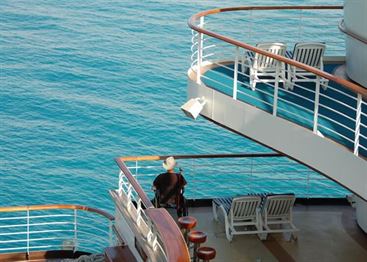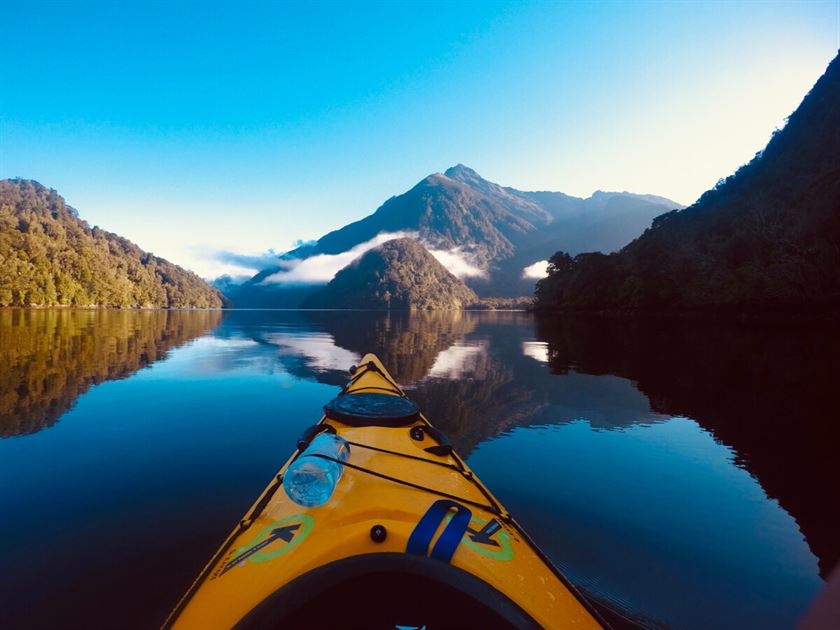Why You Should Use a Travel Agent When Cruising with a Disability

When you have a physical disability, planning a vacation can mean a lot of extra research and planning. Making sure that your transportation, accommodations, and activities are accessible can take time and patience.
Luckily, many cruise lines are going over and above to make their ships fully accessible for travelers of all different abilities.
All cruise ships that dock in American ports are required to abide by the Americans with Disabilities Act. That means all American-docking cruise ships must at least be equipped with things like wheelchair-accessible cabins, public bathrooms, accessible restaurants and more.
But beyond this basic measure, many cruises have updated their designs, features, and programs to make sure passengers of all abilities can enjoy the same spaces and activities.
From dedicated departments to help those with physical disabilities to specifically-designed rooms, bathrooms, and public seating areas, cruisers’ options for fully-accessible fun continues to grow every year.
However, there are still important factors cruisers with physical disabilities need to factor into their planning, like:
- Room accessibility
- Room proximity to elevators
- Regulations for mobility equipment
- Accessibility for each port of call
- Service animal documentation
- Onshore excursion accessibility, and more
Finding the perfect cruise that meets both your travel preferences and your accessibility needs can be a chore. That’s where a travel agent is your best resource. They can help you find the right choice in cruise line, ship, room type, activities, and more.
Here’s how working with a travel agent can make the process of choosing the best cruise for your abilities seamless and stress-free.
Choosing Your Ship
Accessible features vary between cruise lines. When choosing your ship, there are a few things to consider.
Typically, the newer and larger the ship, the more accessible features it will carry. For example, Royal Caribbean’s Symphony of the Seas provide things like 46 accessible cabins with ramped thresholds, roll-in showers, and lowered sinks. There are also lifts for the pool and whirlpool, along with lower playing tables at the casino.
However, older ships often undergo major renovations and upgrades, giving cruise lines the opportunity to make their ships more accessible to cruisers. And although ocean-going cruises tend to be more disability-friendly, some river cruise ships are also equipped with accessible features and excursions.
Starting with your travel dates, preferred length of cruise, and where you want to go, your CloudBlue Travel agent can help you weed out the best cruise lines and ships to accommodate your mobility needs.
Choosing Your Room
Different ships offer different types of accessible rooms. Although a typical stateroom on a cruise is usually smaller than a hotel room, most cruise lines offer accessible and modified staterooms.
For example, Holland America has several types of accessible staterooms:
Fully Accessible and Single Side Approach
- These are rooms for passengers with no mobility or highly limited mobility.
Ambulatory Accessible staterooms
- These rooms have accessible features, but aren’t large enough to accommodate wheelchairs or scooters.
Many cruise lines will provide maps to show how close your accessible room will be to things like elevators, restaurants, and other locations. However, there may only be a small amount of accessible rooms, which is why it’s important to look into booking your room early.
CloudBlue agents will help you find the type of accessible room that you need. They can also help you find a room in a location that will make it easiest to access certain amenities and features of the ship.
Look for Dedicated Departments for Disabled Passengers
Many cruise lines have dedicated departments to assist passengers with disabilities. A ship that offers this type of customer service likely keeps accessibility top-of-mind when designing the features and programs of the ship.
These departments can advise you on things like the size of a ship’s stateroom doorway, or whether or not you’ll need a collapsible wheelchair or scooter. They can tell you if there are any areas that won’t be accessible by wheelchair or scooter, and if it’s possible to travel with a service dog.
For example, Celebrity Cruises will help arrange your transportation from the airport to the port of call, and assists with boarding your cruise. Celebrity’s customer service and reservation agents are also Certified Accessible Travel Agents (CATA) with Special Needs at Sea, a company that rents mobility and medical equipment to cruise passengers.
Disney Cruise Line also offers assistance for special needs passengers and provides various items like communication kits containing door knock and phone alerts or bed rails. And Norwegian Cruise Line staffs each ship with an access officer, who is the go-to person for passengers with disabilities.
Not all lines include specific details about accessibility on their site. That’s where our experts at CloudBlue Travel can help. We’ll work with the cruise line to make sure to get all the details you need about the ship’s accessible features and restrictions before you book.
Bringing on Mobility Equipment
Your cruise line may have certain guidelines about the type of mobility equipment you bring aboard. Some cruise lines may also have requirements about the width and weight of your mobility equipment, including the types of batteries and chargers. You may also be required to store your equipment in your room when you’re not using it.
Additionally, there may be rules regarding service animals. Service dogs are typically permitted onboard most cruises, but might not be allowed to disembark at all ports.
Your CloudBlue travel agent will work with the cruise line to make sure you can bring the equipment you need to enjoy your cruise to the fullest. If you can’t or don’t want to bring your mobility equipment onboard, we can also work with you on renting from a provider like Special Needs at Sea or Scootaround. They offer wheelchairs, scooters, oxygen and more.
If you have a service animal, we will also help determine what documentation is needed to accommodate your animal for each port of call the cruise will be visiting.
Ports of Call
While your cruise ship may be completely accessible, some ports of call may not be.
Sometimes, passengers have to navigate a steep incline to get down to the dock at a port of call. Other times, your ship may not be able to dock because of lack of availability. In this case, your ship may have to anchor offshore, and passengers will be shuttled to shore in small boats called tenders.
But challenges like rough seas and weight limits may make it impossible for some travelers to leave the ship at a specific tender port. For example, Princess Cruises states that the maximum weight of the wheelchair including passenger cannot exceed 600 pounds on transportation lifts to get down to a tender. And in the case that you’re unable to disembark, “there will be no refund or credit for missed ports.”
Your CloudBlue agent will help you choose a cruise that prioritizes visiting accessible ports of call so you can enjoy your cruise to its fullest, including all onshore excursions and explorations.
Onshore Excursions
One of the most exciting aspects of cruising is the onshore adventures at ports around the world.
These excursions can range from strolling through a merchant market to whale watching to hands-on cooking classes in restaurants.
Most cruise lines are aware of the need for excursions that allow for a variety of abilities, and many offer several options ranging from easy to strenuous.
For example, Silversea has recently added accessible onshore excursions available in nine ports of call in the Caribbean and Central America. These tours are headed by guides who understand accessibility issues, and avoid stairs while providing vehicles with wheelchair ramps and lifts.
Each port of call destination can present unique challenges. Cobblestone streets and uneven walking surfaces are treacherous obstacles for those who have reduced mobility. Some locations have museums, restaurants, and art galleries a short walk from the port. But other attractions may be up on a steep hill that are less accessible.
Wherever you plan on going, our CloudBlue agents can contact any area’s convention and visitor’s bureau to discuss the terrain and availability of wheelchair-accessible public transportation. We will also work with the onshore excursion department to create a semi-private or private tour best suited to your needs and budget.
After You Book
Once your cruise has been booked, the cruise line’s accessibility department will ask you to complete a form describing your limitations and needs.
The more information you can share and the earlier you submit it, the better. For example, Royal Caribbean requires 30 days’ notice before sailing to provide things like a shower stool or commode seat.
Knowing how to pick which ship is best for both accessibility and your travel itinerary can be overwhelming. Let a CloudBlue travel agent take some of the stress out of travel planning. Contact us today »
Get Travel Deals Today!


